Let me write this now.Transforming your outdoor space into a peaceful sanctuary begins with understanding the timeless principles of zen design. Zen gardens were originally develope d by Japanese Buddhist monks as places for meditation, emphasizing simplicity, balance, and natural harmony. The best plants for a Zen garden include bonsai, topiaries, dwarf conifers, Japanese maples, azaleas, bamboo, sedges, creeping ground covers, ferns and mosses. Whether you have acres of land or just a small balcony, these 20 zen garden ideas will help you create your own meditative retreat that promotes mindfulness and inner peace.
1. Traditional Dry Landscape Zen Garden
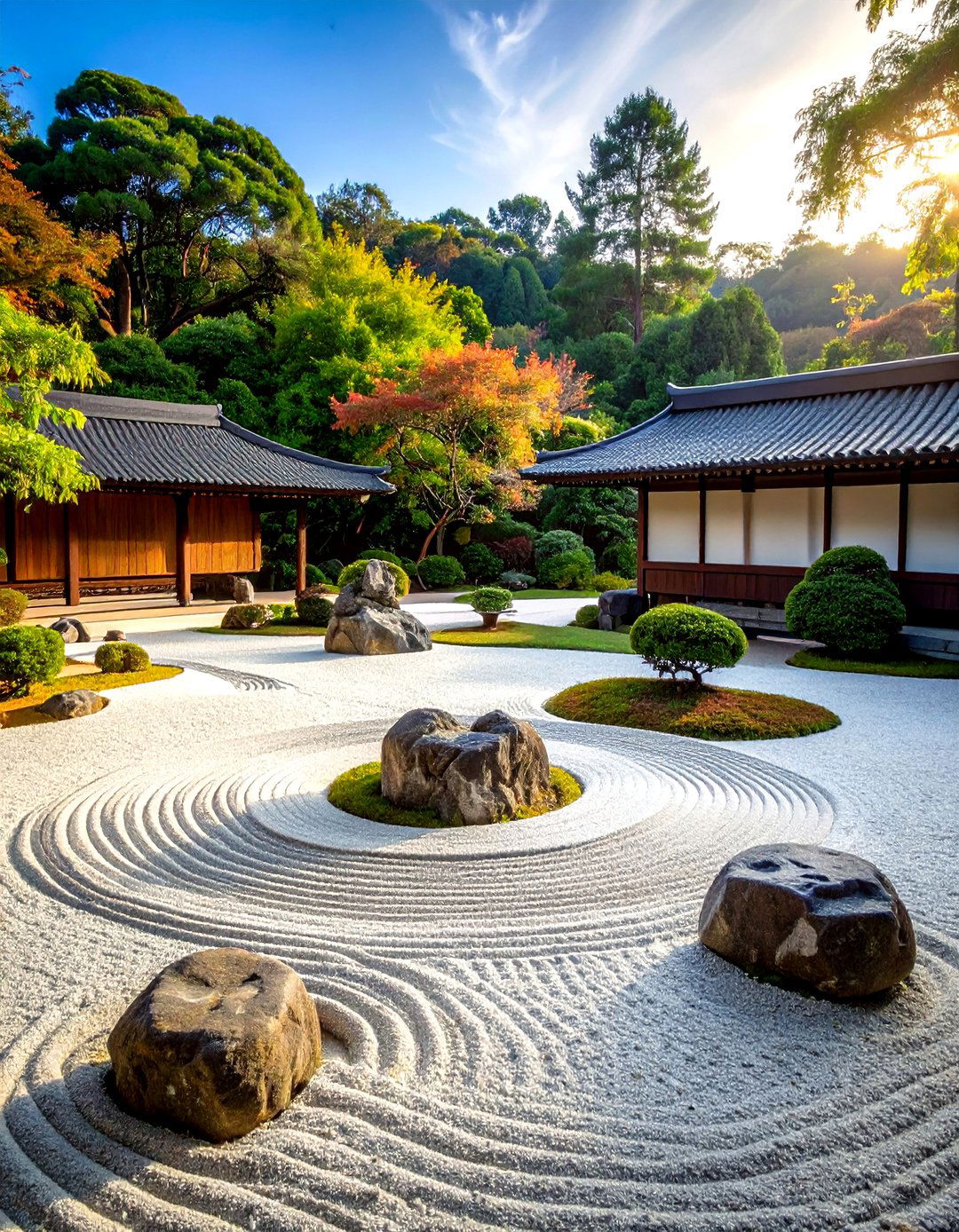
Dry landscape gardens, or "karesansui," are the embodiment of Zen garden design, featuring carefully arranged rocks, raked gravel, and sand without water elements. These minimalist zen garden spaces create powerful symbolism through simple materials, where stones represent mountains and raked patterns symbolize flowing water. The act of maintaining these patterns becomes a meditative practice itself. Traditional dry landscape zen gardens require minimal maintenance while providing maximum visual impact throughout all seasons. Their austere beauty encourages contemplation and serves as the perfect foundation for anyone seeking to create an authentic Japanese meditation space in their backyard.
2. Zen Garden with Bamboo Water Fountains
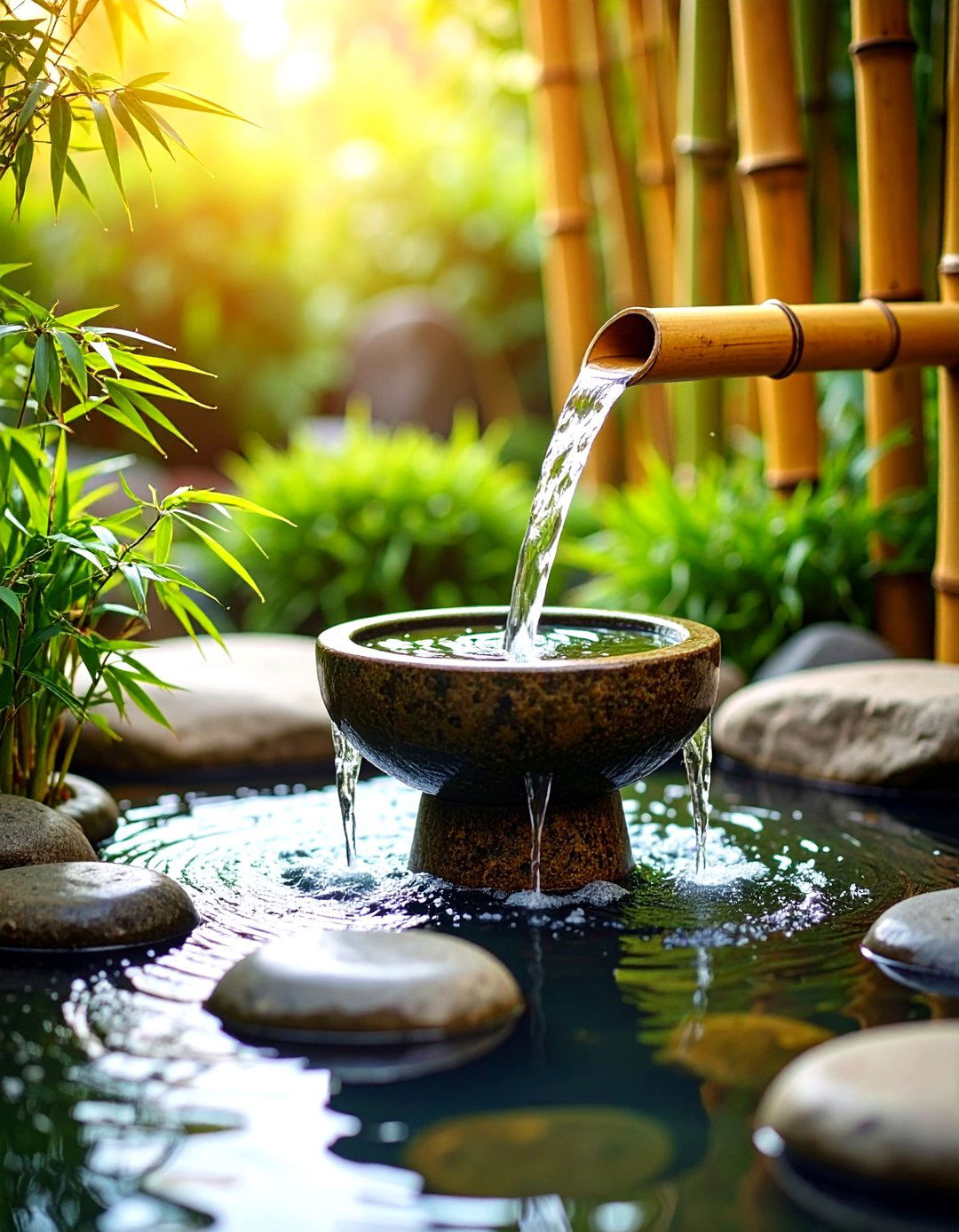
Japanese gardens often have a tipping bamboo water feature called shishi-odoshi, which creates rhythmic sounds that enhance meditation. These bamboo zen garden fountains were originally designed to scare away deer but have evolved into beloved aesthetic features. The gentle flow of water through bamboo creates a natural soundtrack for relaxation while symbolizing life's continuous movement. Installing a bamboo water fountain zen garden requires basic plumbing knowledge, but the soothing sounds and visual appeal make it worthwhile. The rhythmic tipping motion adds dynamic elements to otherwise static garden spaces, creating focal points that draw visitors into deeper contemplation.
3. Moss Zen Garden Sanctuary

Creating a moss zen garden transforms shaded areas into verdant carpets of tranquility. Moss makes a serene-looking groundcover in moist, shady areas and requires minimal foot traffic to thrive. These soft, emerald sanctuaries work beautifully around stone features and water elements, creating natural transitions between hard and soft textures. A moss zen garden sanctuary develops slowly over time, teaching patience while establishing its lush beauty. The velvety texture invites gentle touch and provides natural sound dampening, making these spaces ideal for quiet meditation. Adding stepping stones through moss areas allows access without damage while maintaining the garden's pristine appearance.
4. Bonsai Display Zen Garden
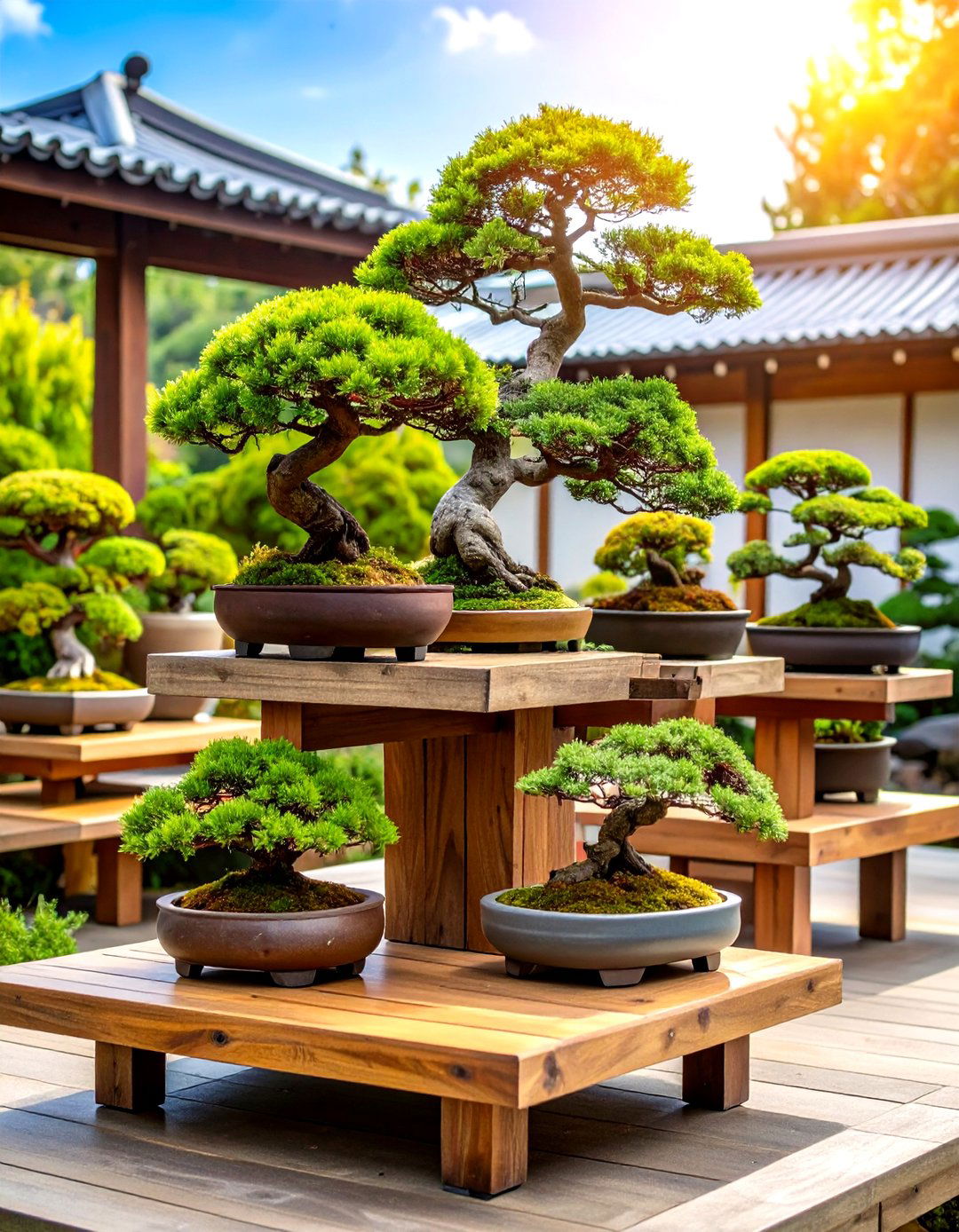
Bonsai trees, like ficus and juniper, bring beauty and elegance to zen garden spaces while representing patience and artistic cultivation. A bonsai display zen garden showcases these miniature trees as living sculptures, each telling stories of time and careful tending. Arrange bonsai on varying height platforms or integrate them into rock gardens for visual depth. These living artworks require dedicated care but reward gardeners with year-round beauty and seasonal changes. The practice of pruning and shaping bonsai becomes its own form of meditation, connecting gardeners with their plants' growth cycles while maintaining the zen principles of mindful attention to detail.
5. Bamboo Grove Zen Garden
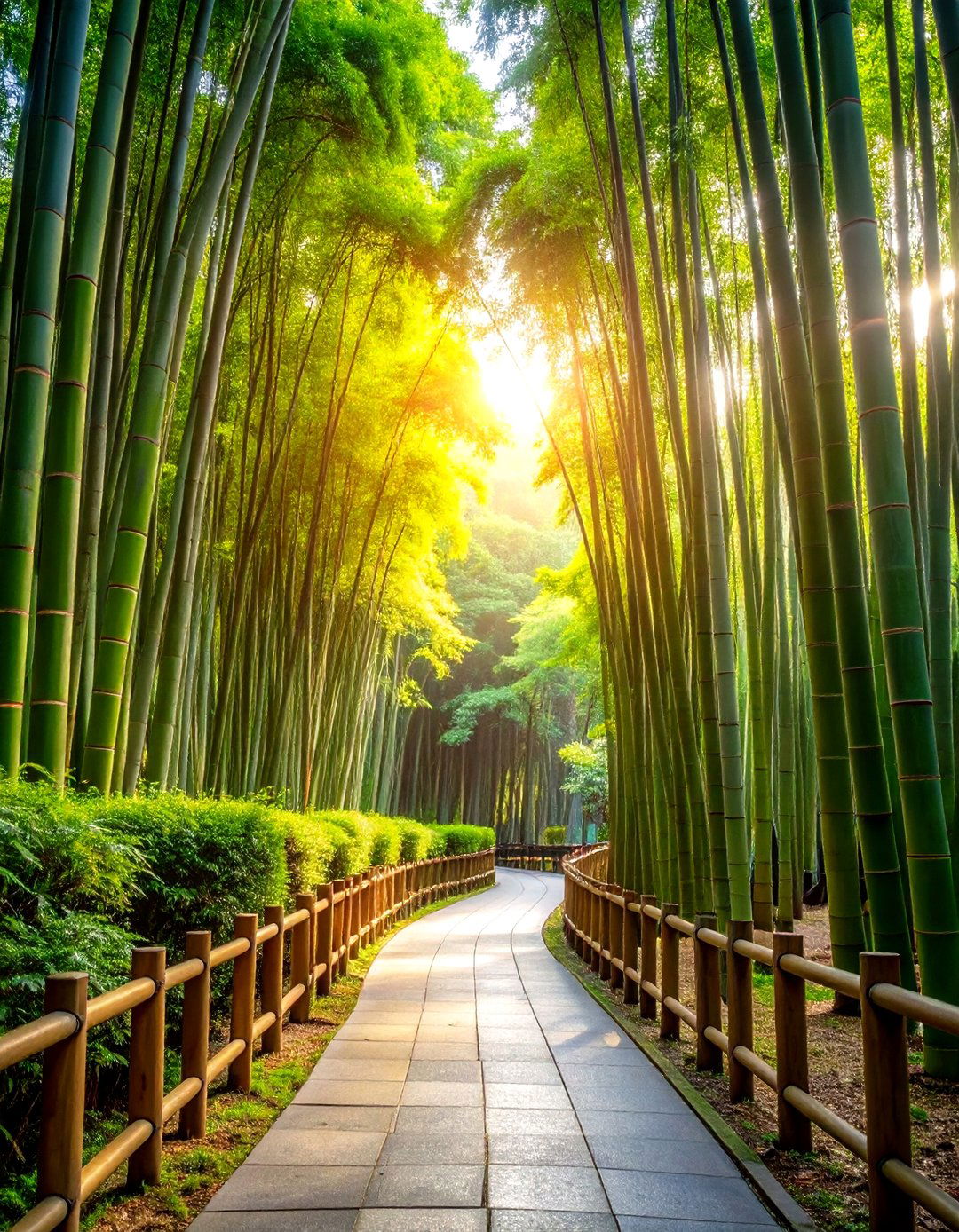
Bamboo creates natural privacy screens while adding gentle rustling sounds to outdoor spaces. Bamboo is great for fences and screens in a zen garden due to its long association with Japanese arts, crafts and buildings. A bamboo grove zen garden provides vertical elements that sway gracefully in breezes, creating movement and natural sound barriers. Choose clumping varieties to prevent invasive spreading, or use container plantings for controlled growth. The hollow stems produce distinctive sounds when wind passes through, adding auditory meditation elements. Bamboo's rapid growth symbolizes resilience and adaptability, making these zen gardens perfect for those seeking dynamic natural elements.
6. Japanese Maple Zen Garden
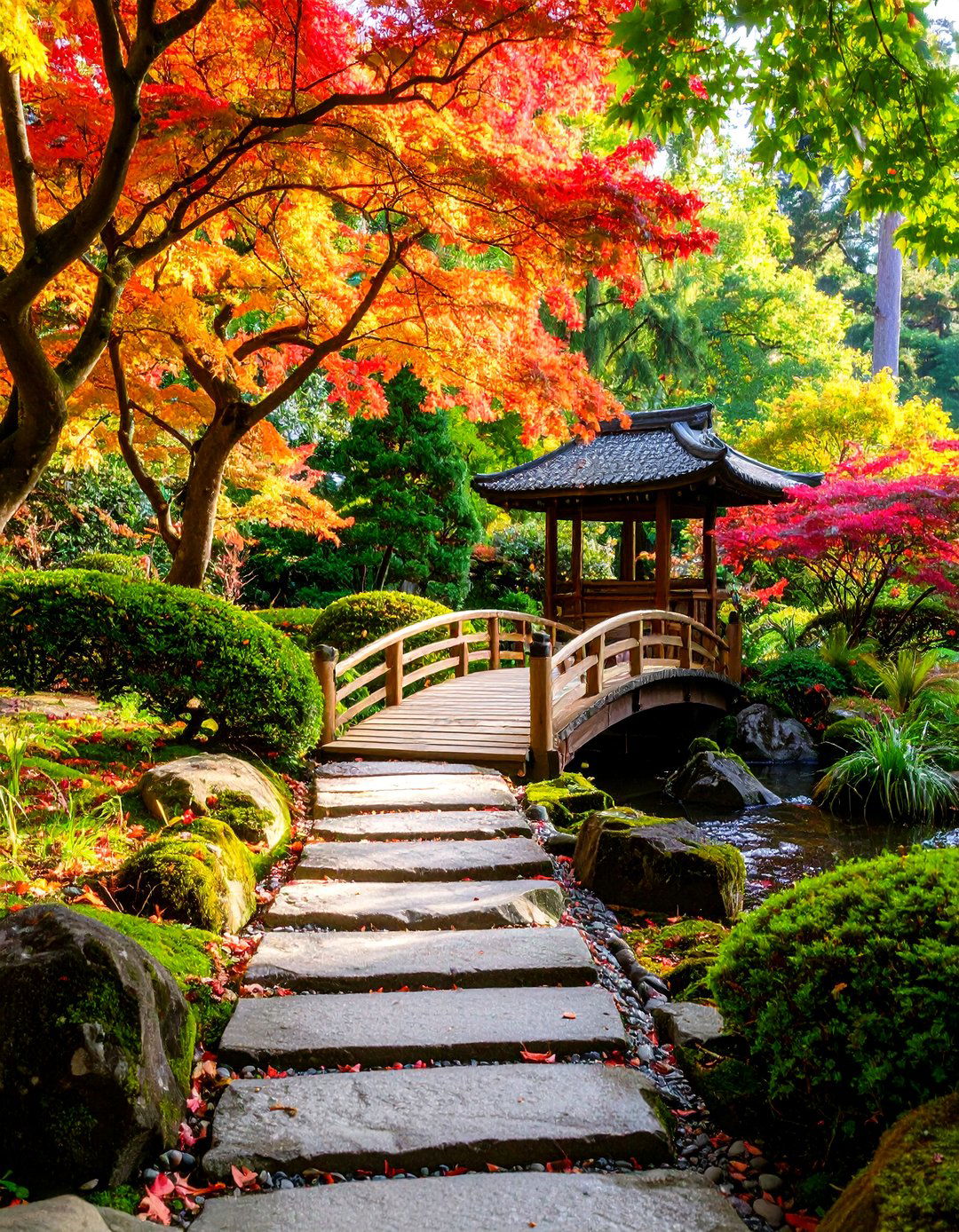
A Japanese maple adds vibrant seasonal color to a zen garden with foliage that transforms from spring green to autumn fire. These elegant trees serve as focal points in zen gardens, providing structure and seasonal interest throughout the year. Japanese maple zen gardens work well in both large landscapes and container settings, adapting to various space constraints. The delicate branch patterns create intricate shadows that change throughout the day, adding temporal elements to garden design. Their moderate size makes them perfect for residential zen gardens, while their stunning autumn display rewards patient gardeners with spectacular seasonal transformations.
7. Stone Lantern Zen Garden
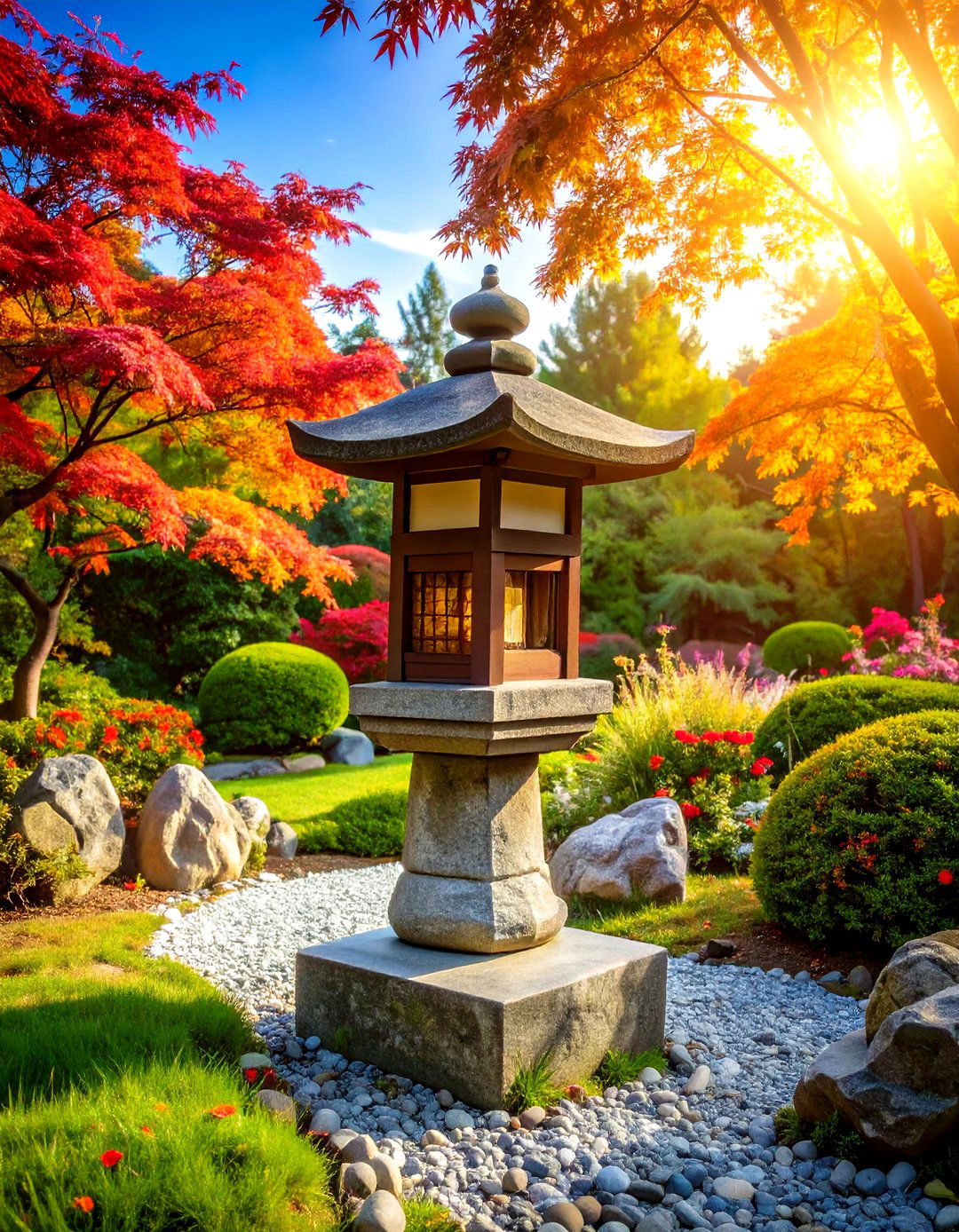
Stone lanterns are perhaps the most commonly recognizable feature in a zen garden and serve both decorative and functional purposes. These carved granite fixtures add authentic Japanese aesthetics while providing gentle evening illumination. A stone lantern zen garden creates focal points that guide visitors through meditative spaces, especially when placed near water features or along pathways. Traditional placement follows specific principles, positioning lanterns at garden entrances, near bridges, or beside meditation areas. Whether using authentic carved stone or modern reproductions, these lanterns anchor zen garden designs with timeless elegance and cultural significance.
8. Miniature Desktop Zen Garden
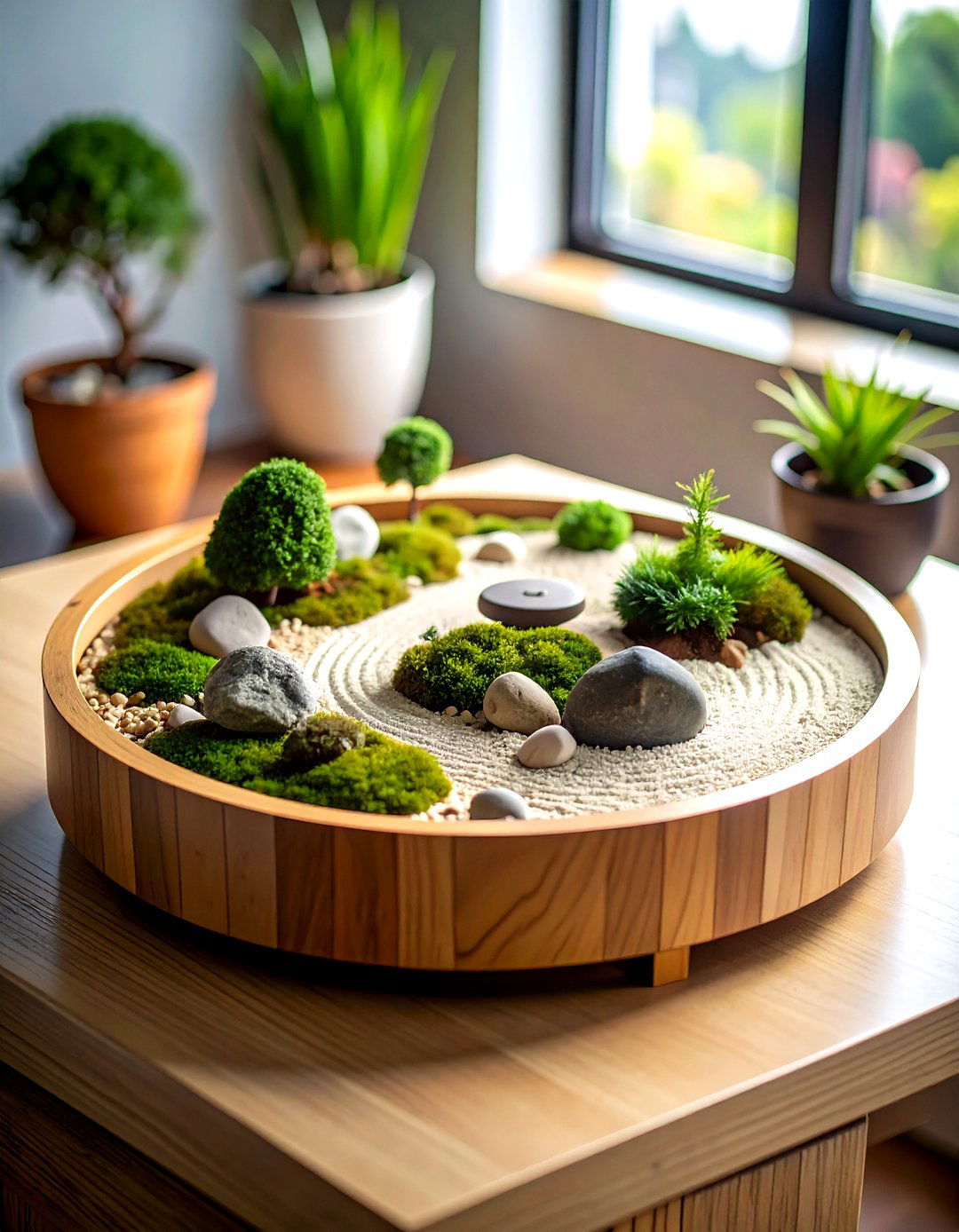
A miniature Zen garden is one of the most relaxing garden container projects and brings meditation practices to indoor spaces. These tabletop zen gardens require only shallow containers, fine sand, small rocks, and miniature rakes for pattern creation. Desktop zen gardens fit perfectly in offices or bedrooms, providing instant stress relief during busy days. The act of raking small patterns becomes a mindful break from digital screens and demanding schedules. Many commercially available kits include additional elements like tiny Buddha statues, bridges, or bonsai trees. Creating personal patterns in sand offers therapeutic benefits while requiring no maintenance or watering.
9. Koi Pond Zen Garden
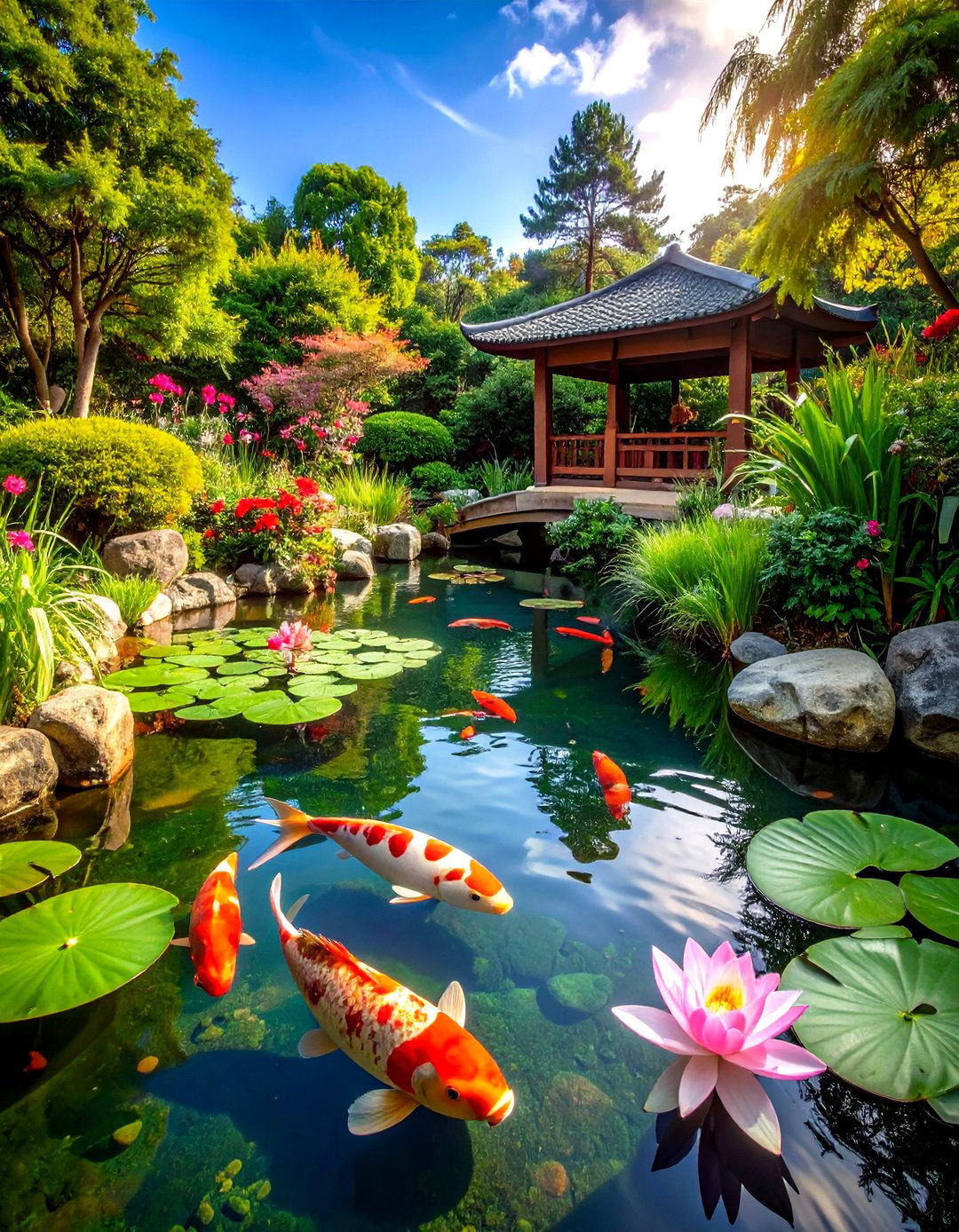
Koi fish are auspicious symbols that are said to represent courage and perseverance while adding living elements to zen garden designs. A koi pond zen garden combines flowing water with graceful fish movements, creating dynamic focal points for meditation. The gentle sounds of water circulation and occasional fish splashing provide natural soundscapes that mask urban noise. Koi ponds require more maintenance than dry gardens but offer year-round interest through fish behavior and seasonal changes. Adding lotus flowers or water lilies enhances the Asian aesthetic while providing shade for fish. These living zen gardens teach patience and responsibility while rewarding caretakers with peaceful aquatic beauty.
10. Raked Sand Pattern Zen Garden
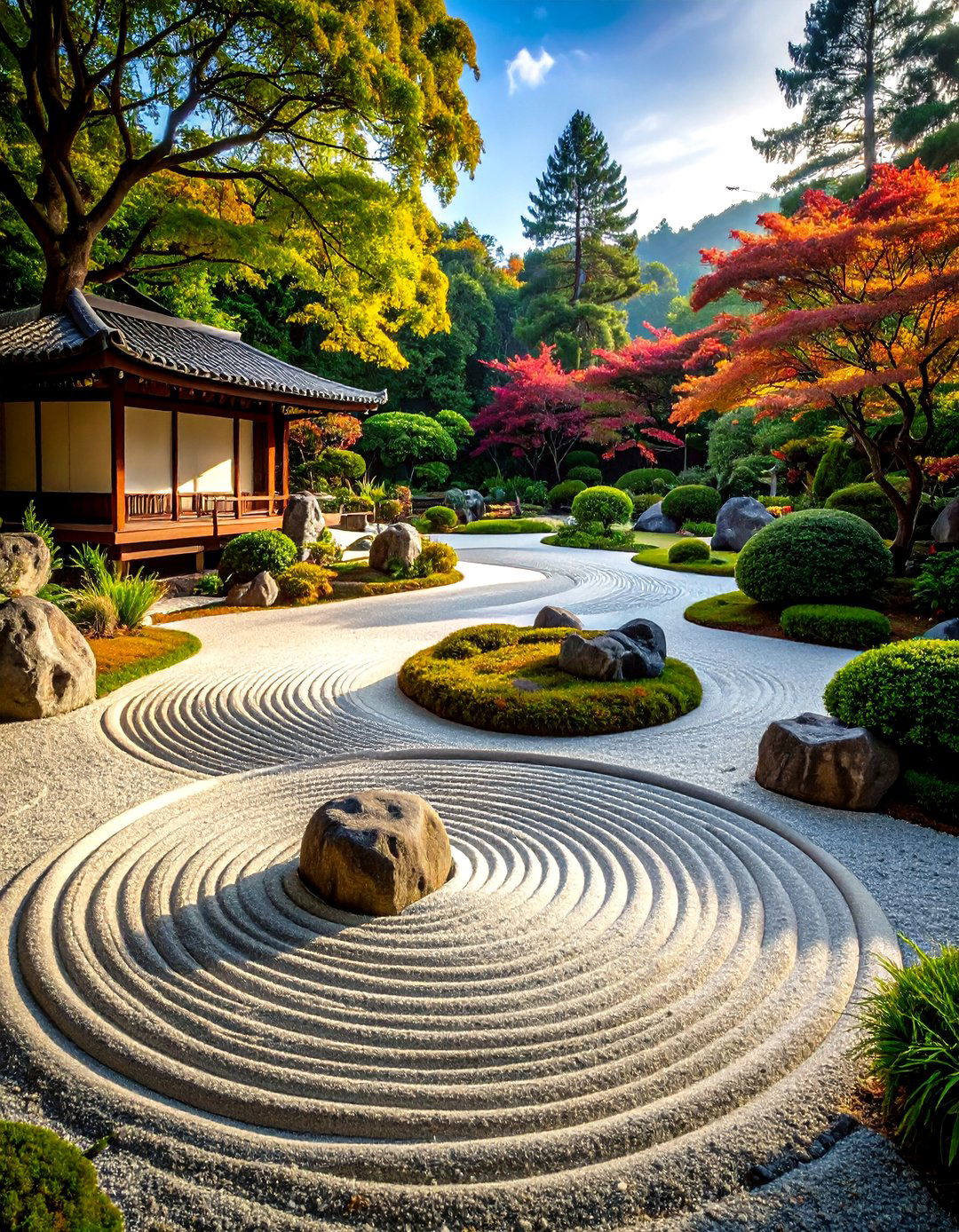
The meditative practice of creating patterns in sand forms the heart of traditional zen gardening. Patterns drawn in the gravel are used to signify a season or evoke a certain mood, with circular patterns representing water ripples and straight lines invoking serenity. A raked sand pattern zen garden requires regular maintenance but offers unlimited creative expression through changing designs. Different rake types create varying textures, from fine parallel lines to broader wave patterns. The temporary nature of sand patterns teaches acceptance of impermanence while providing therapeutic benefits through repetitive motion. These gardens work well in both large outdoor spaces and small indoor containers.
11. Stepping Stone Path Zen Garden
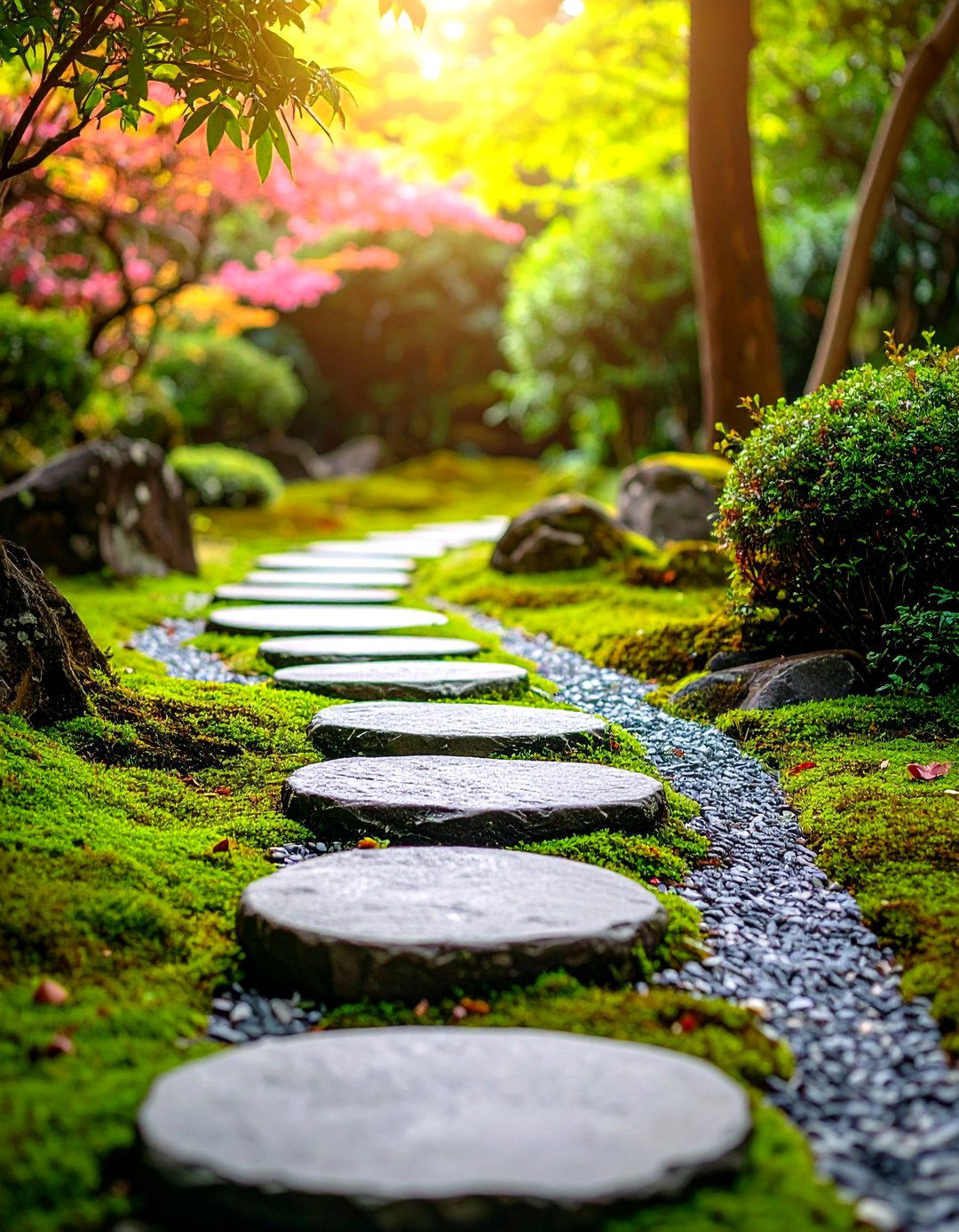
Stepping stones slows down your pace, making you more aware of each step and fostering a deeper connection with the surrounding nature. Creating a stepping stone path zen garden encourages mindful walking while connecting different garden areas. These pathways can wind through moss, cross over raked gravel, or bridge water features, creating journeys rather than direct routes. Natural stone shapes work best, allowing feet to adapt to irregular surfaces that require attention and balance. The spacing between stones influences walking rhythm, with closer placement encouraging slow, meditative movement. Well-designed stepping stone paths become integral parts of zen garden meditation practices.
12. Buddha Statue Zen Garden
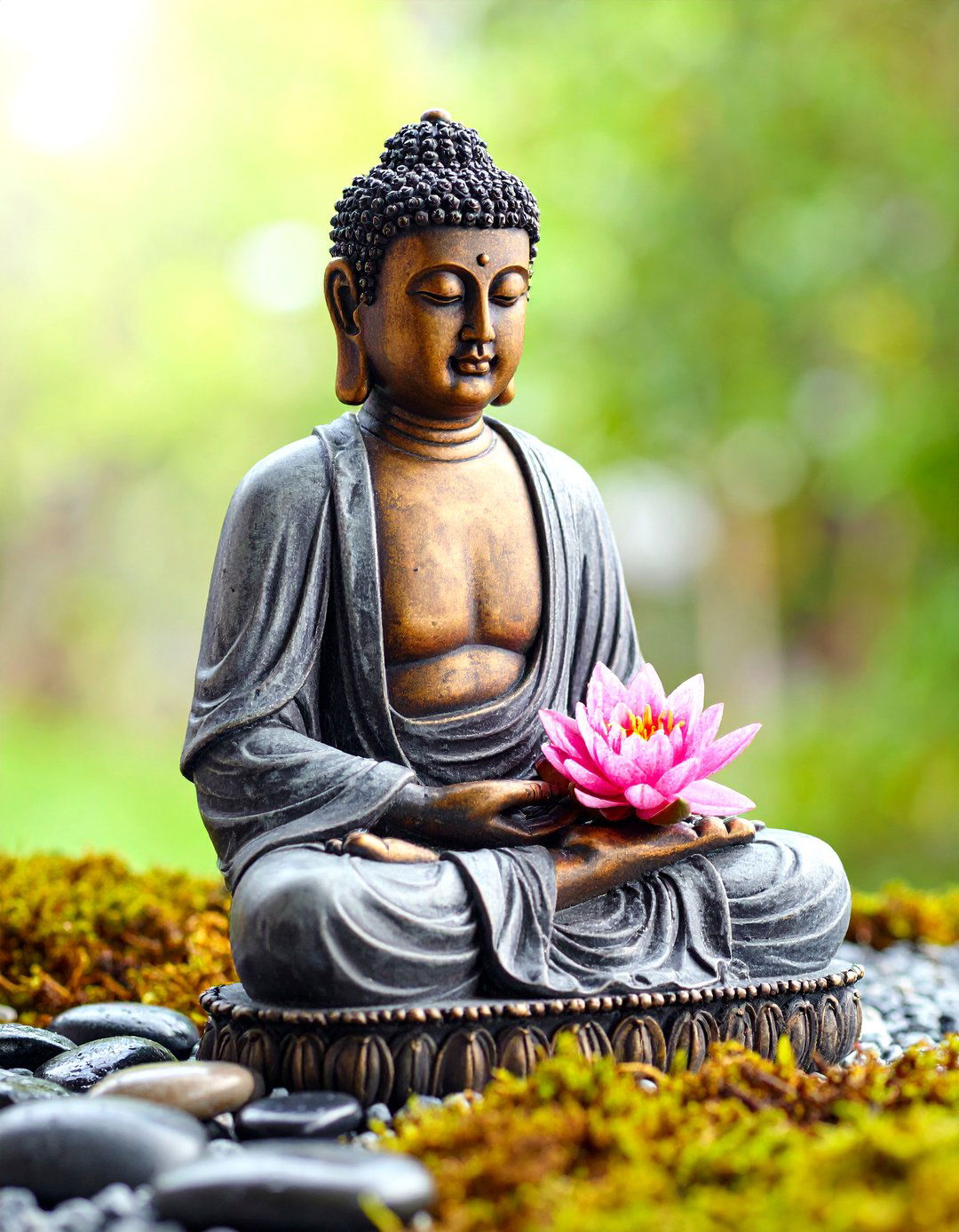
As Zen gardens originated in Buddhist monasteries, it is only apt to include a Buddha sculpture in your space as a symbol of enlightenment and inner peace. A Buddha statue zen garden provides focal points for meditation while honoring the spiritual origins of these peaceful spaces. Place Buddha figures in prominent positions where they can be viewed from seating areas or along meditation paths. The presence of these serene figures encourages reflection on mindfulness and compassion. Choose statues proportionate to garden size, avoiding overwhelming small spaces with oversized sculptures. Weather-resistant materials ensure longevity, while proper placement respects Buddhist traditions and enhances the garden's spiritual atmosphere.
13. Contemporary Sculpture Zen Garden
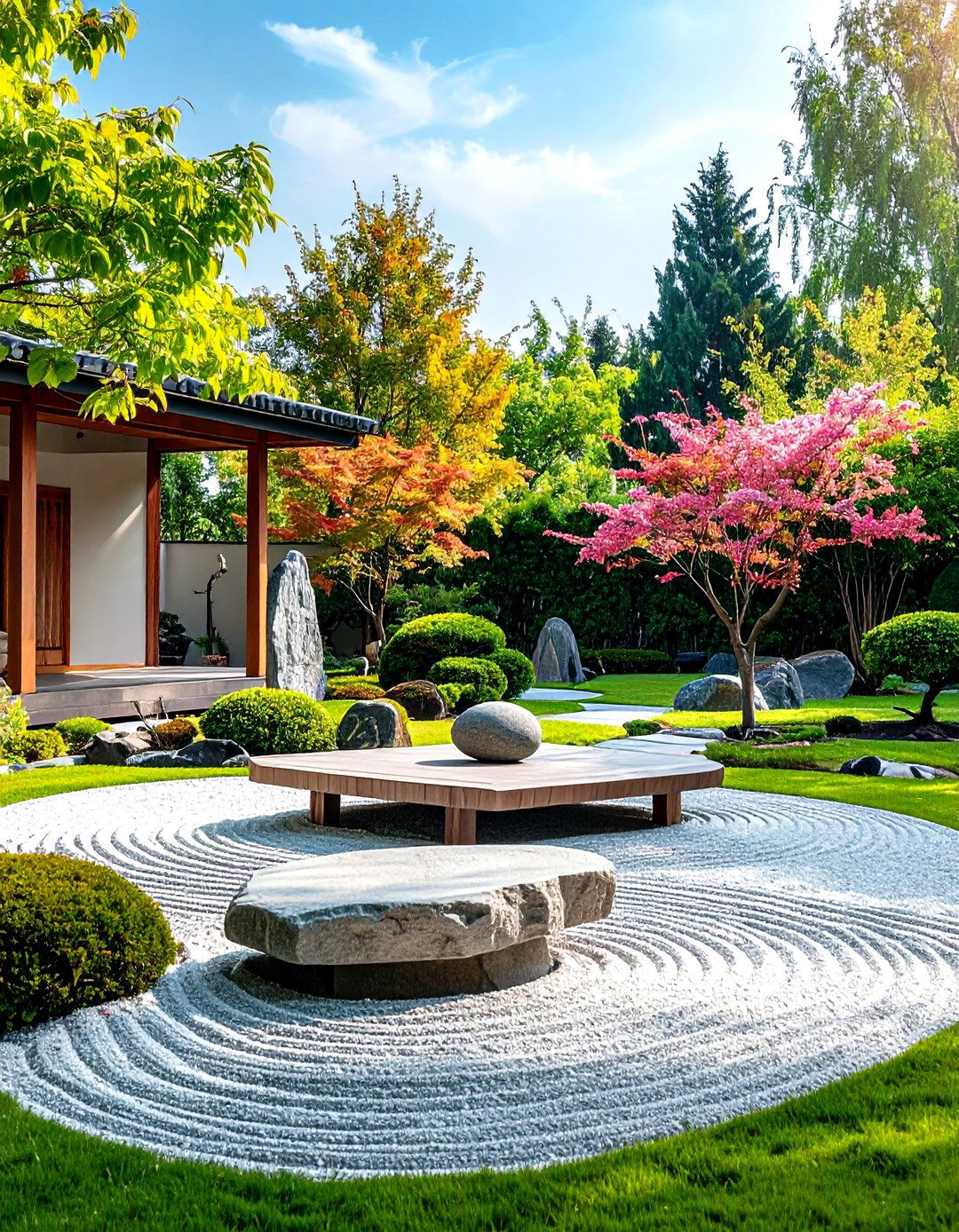
A contemporary sculpture garden introduces a modern aesthetic to the traditional Zen garden by blending ancient principles with modern artistic expression. These innovative zen gardens feature abstract sculptures, geometric forms, or modern materials like steel and glass alongside traditional elements. The juxtaposition creates dynamic conversations between old and new, challenging conventional zen aesthetics while maintaining meditative qualities. Contemporary sculpture zen gardens work well in modern architectural settings where traditional elements might feel out of place. Select pieces that complement rather than dominate the space, ensuring sculptures enhance rather than distract from the garden's peaceful purpose.
14. Container Zen Garden
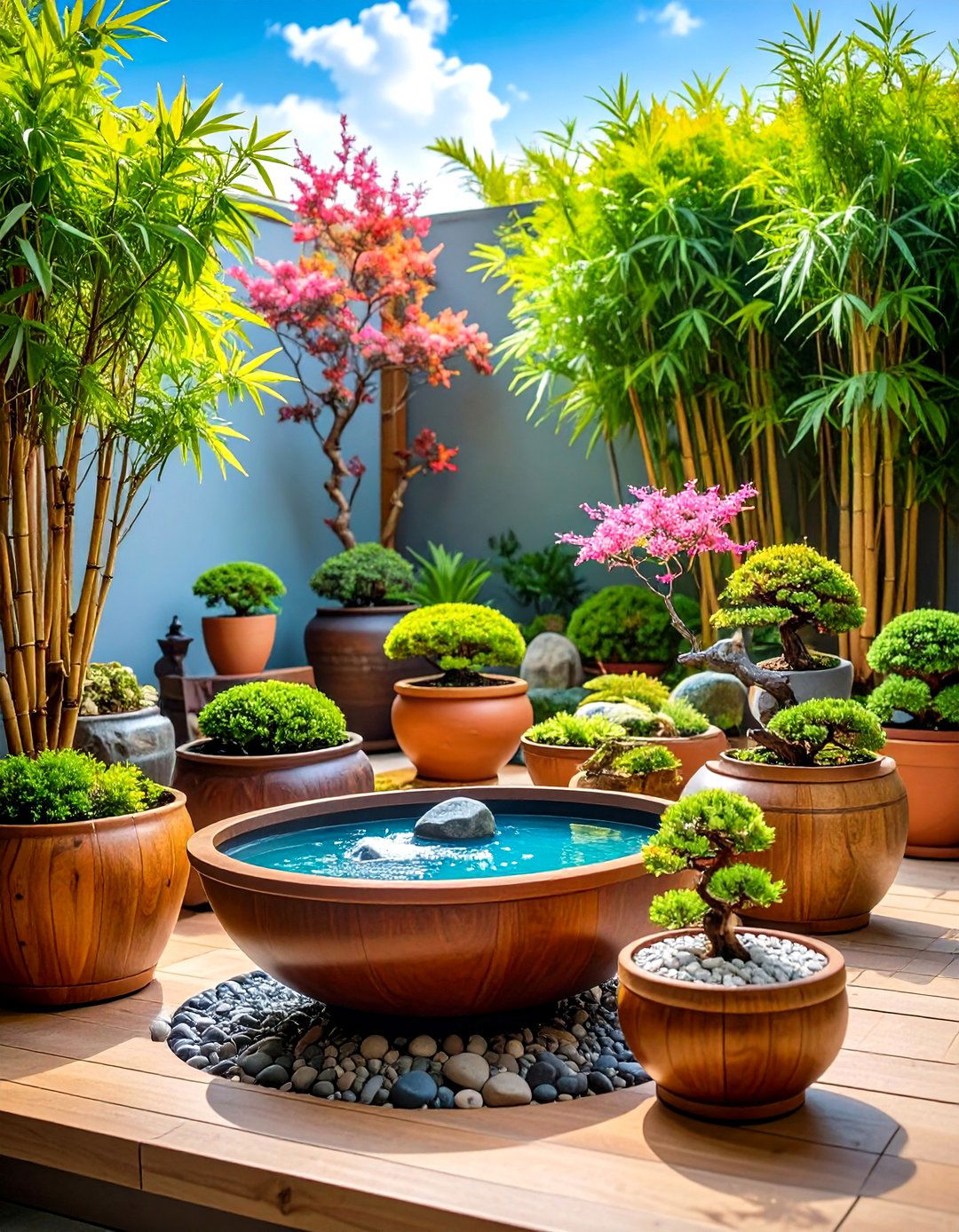
For those with limited space, container zen gardens offer portable serenity that adapts to any environment. In larger spaces, floor models containing bamboo, water, and bonsai trees are more suitable while smaller containers work perfectly for apartments or offices. These portable zen gardens allow seasonal relocation and protection during harsh weather. Large ceramic pots, wooden planters, or stone vessels can house complete miniature landscapes including plants, water features, and decorative elements. Container zen gardens require careful attention to drainage and plant selection but offer flexibility impossible with permanent installations. They're perfect for renters or those wanting to experiment with zen design before committing to larger projects.
15. Zen Garden with Bridges

Bridges symbolize transitioning from one space to the next, and they're a popular element in a Zen garden creating peaceful connections between different areas. A zen garden with bridges adds architectural interest while encouraging contemplative crossing from one mindset to another. These structures can span dry gravel "streams," actual water features, or simply connect different elevation levels within the garden. Wooden bridges weather naturally, developing patina that enhances their integration with surrounding plants and stones. The act of crossing bridges becomes symbolic of personal transitions and spiritual journeys. Even small decorative bridges in miniature zen gardens create powerful psychological effects of moving between spaces.
16. Meditation Cushion Zen Garden
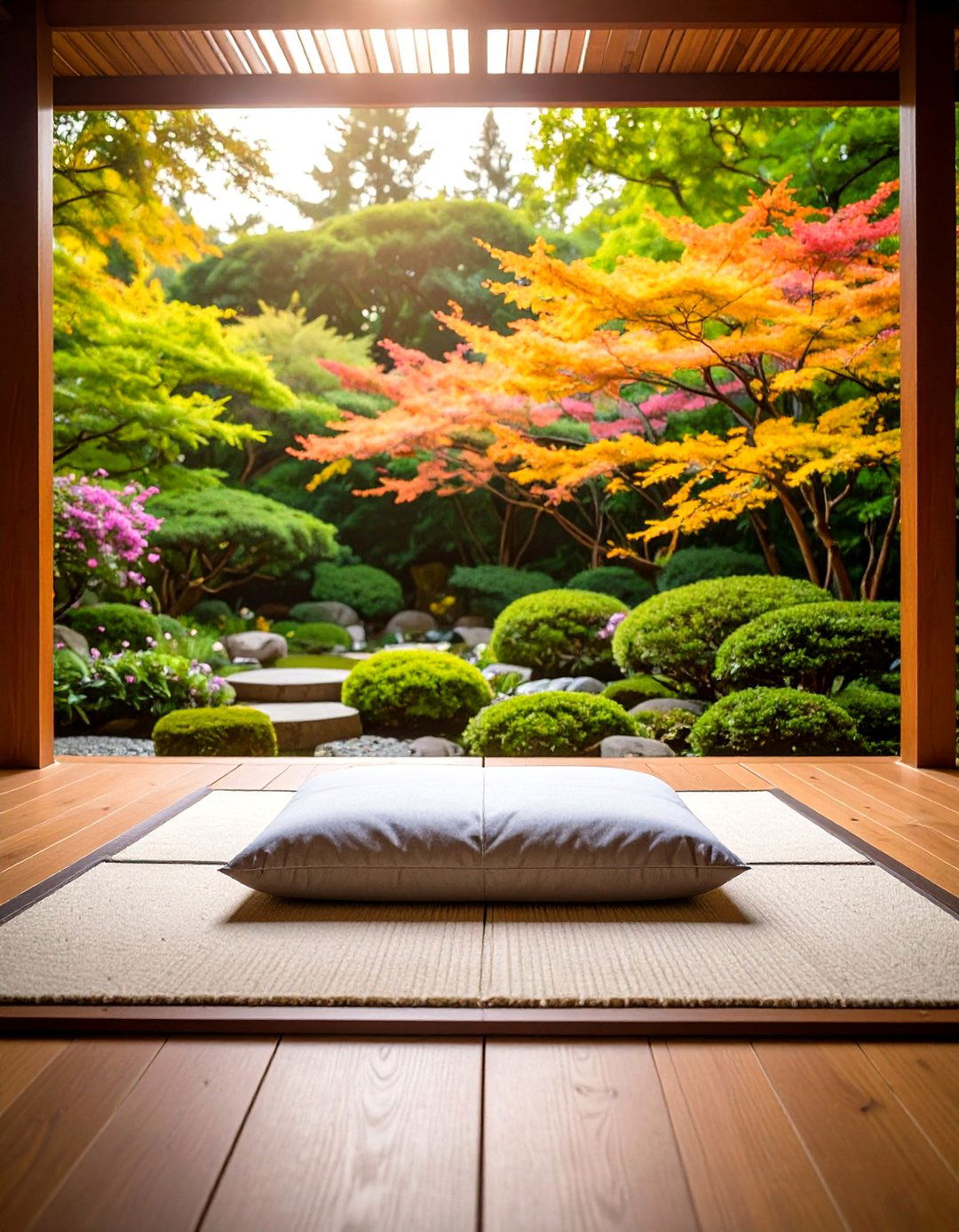
Designate a flat spot with a yoga mat or meditation cushion, perhaps on a platform or patio stones, for a stable and comfortable practice space. A meditation cushion zen garden provides dedicated seating areas specifically designed for contemplative practice. These spaces combine comfortable positioning with beautiful surroundings, encouraging regular meditation habits. Install weatherproof cushions or create covered seating areas protected from elements. The view from meditation spots should include pleasing garden elements like water features, raked sand patterns, or beautiful plantings. Proper positioning considers sunrise and sunset angles, wind patterns, and privacy needs. These purposeful seating areas transform zen gardens from purely visual experiences into functional meditation retreats.
17. Hanging Lantern Zen Garden
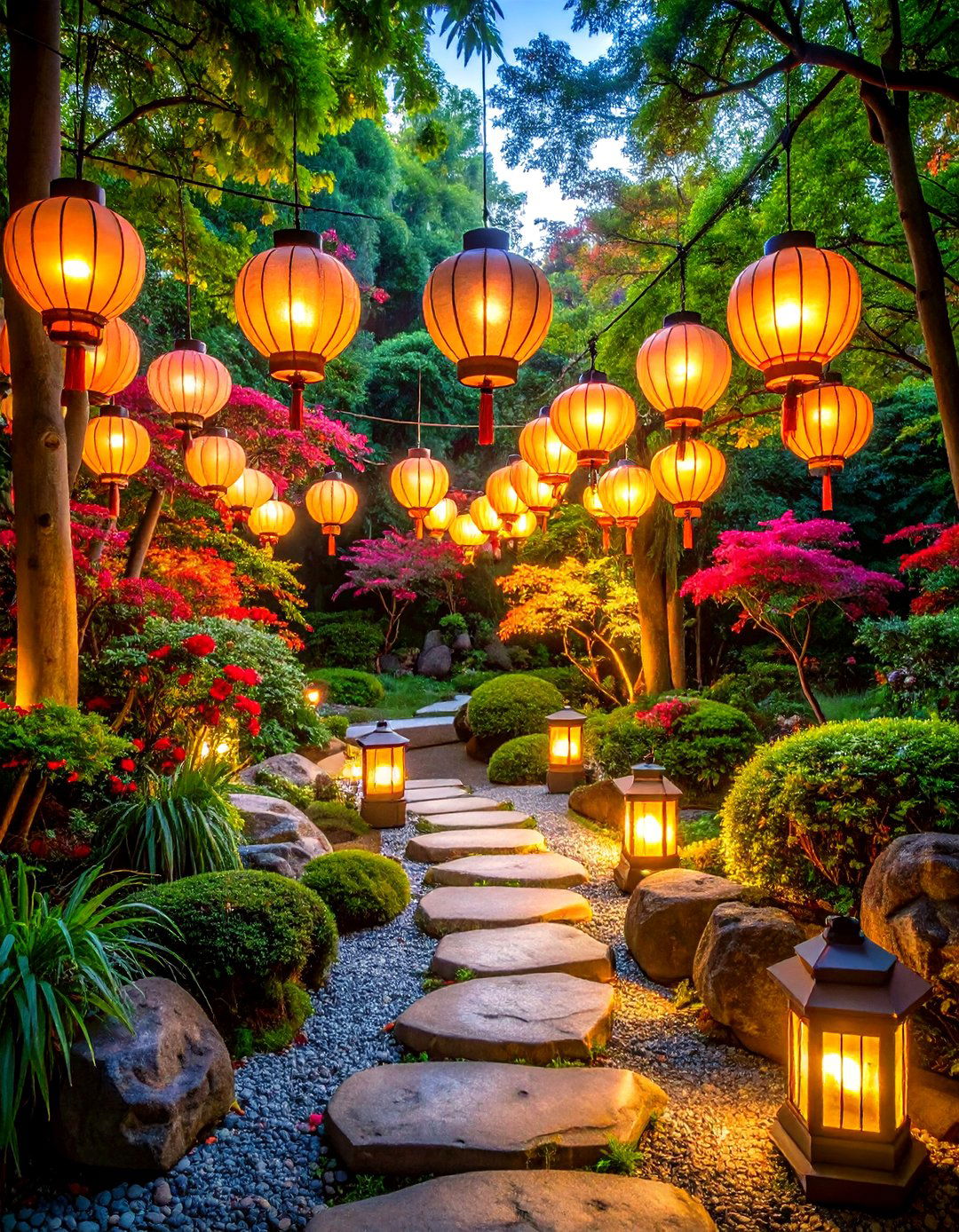
For a glowing and tranquil effect, hang lanterns throughout your Zen garden to extend usability into evening hours. Paper lanterns, bamboo fixtures, or modern LED options create magical atmospheres after dark while honoring traditional Japanese lighting practices. A hanging lantern zen garden transforms completely as daylight fades, revealing hidden beauty through gentle illumination. Strategic placement highlights water features, sculptures, or beautiful plantings while creating safe navigation paths. Solar-powered options eliminate wiring needs while providing eco-friendly operation. The soft glow encourages evening meditation sessions and extends garden enjoyment throughout longer summer evenings. Temporary lanterns allow seasonal decoration changes while permanent fixtures provide year-round ambiance.
18. Rock and Pebble Zen Garden
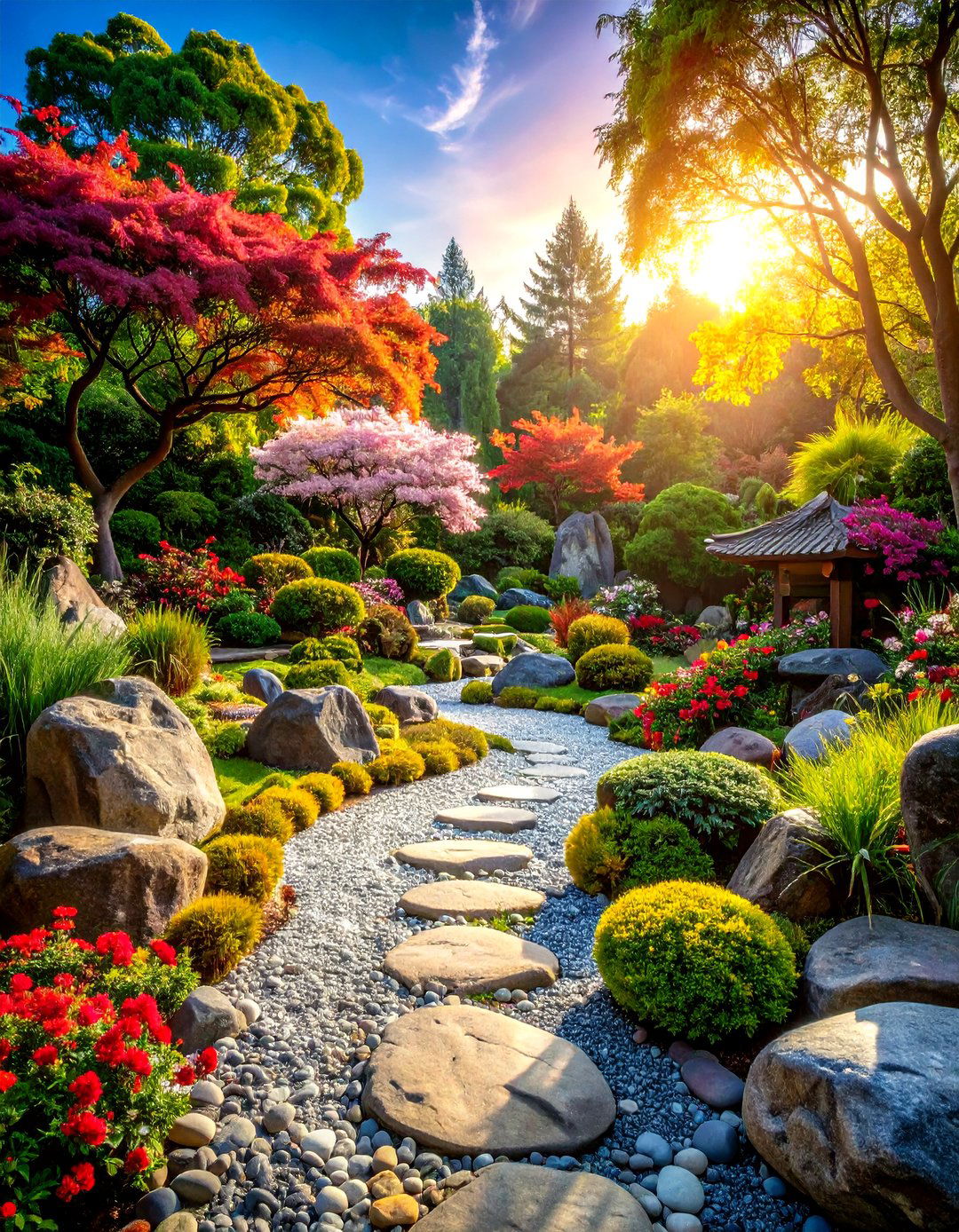
Mix and match the types of stones and the sizes of stones you use to create diverse textural landscapes that engage multiple senses. Rock and pebble zen gardens showcase the earth's natural artistry through careful stone selection and placement. Large boulders serve as anchor points while smaller stones fill spaces and create pathways. The variety in sizes, colors, and textures adds visual interest without requiring plant maintenance. These gardens work excellently in dry climates where water conservation is important. The thermal mass of stones moderates temperature swings while providing habitat for beneficial insects and small wildlife. Arranging stones becomes a meditative practice itself, teaching patience and attention to natural beauty.
19. Fern and Moss Zen Garden
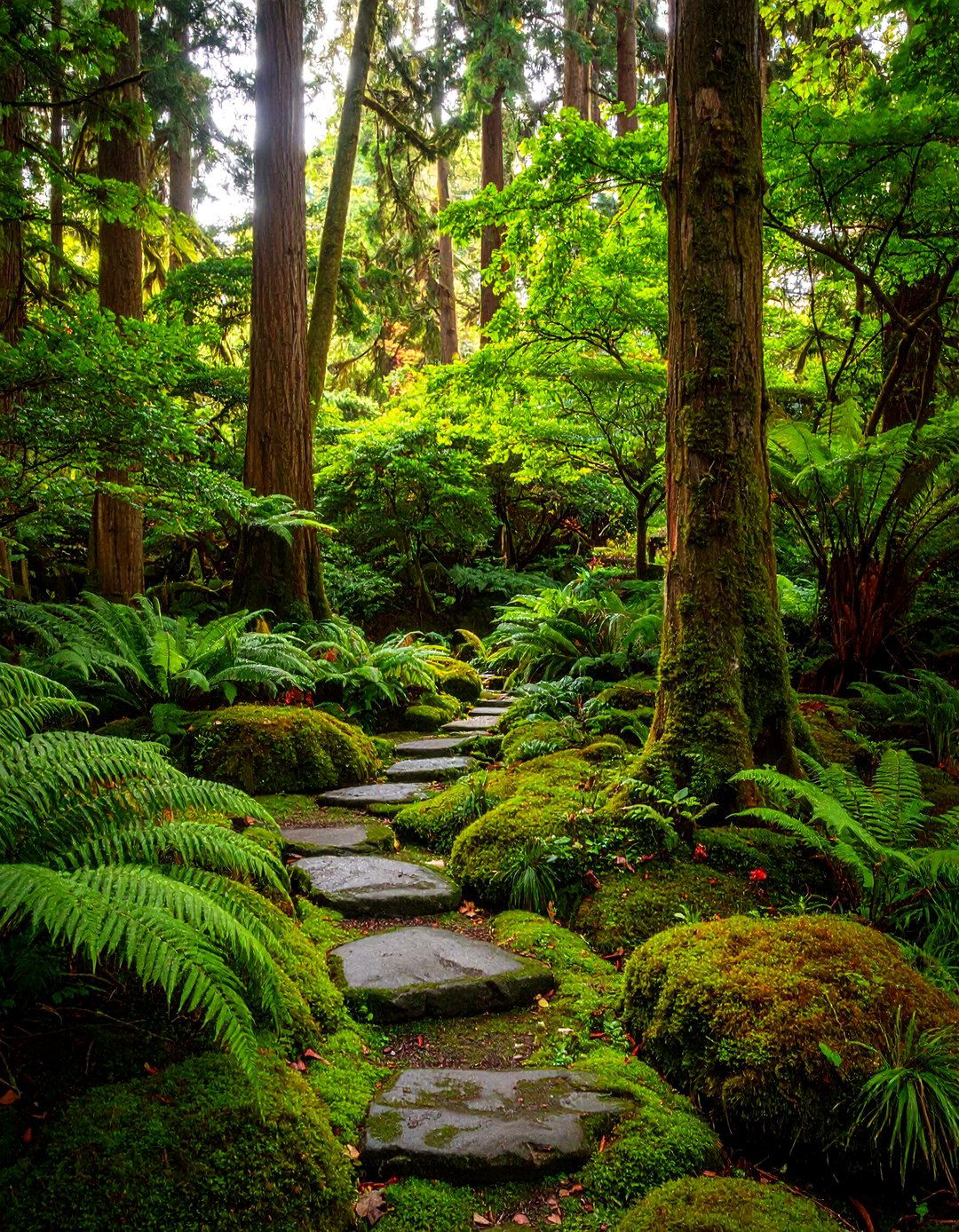
Ferns add a soothing dose of green to a garden and evoke a woodland-like ambience while creating lush, peaceful environments perfect for meditation. These shade-loving plants thrive in moist conditions, making fern and moss zen gardens ideal for challenging spots where other plants struggle. The combination creates layered textures from the soft moss ground cover to the architectural fronds of various fern species. These gardens require minimal maintenance once established, with natural rainfall often providing adequate moisture. The prehistoric beauty of ferns connects gardens to ancient landscapes while their unfurling fronds symbolize new growth and renewal. Cool, green environments provide natural air conditioning during hot summer months.
20. Labyrinth Zen Garden
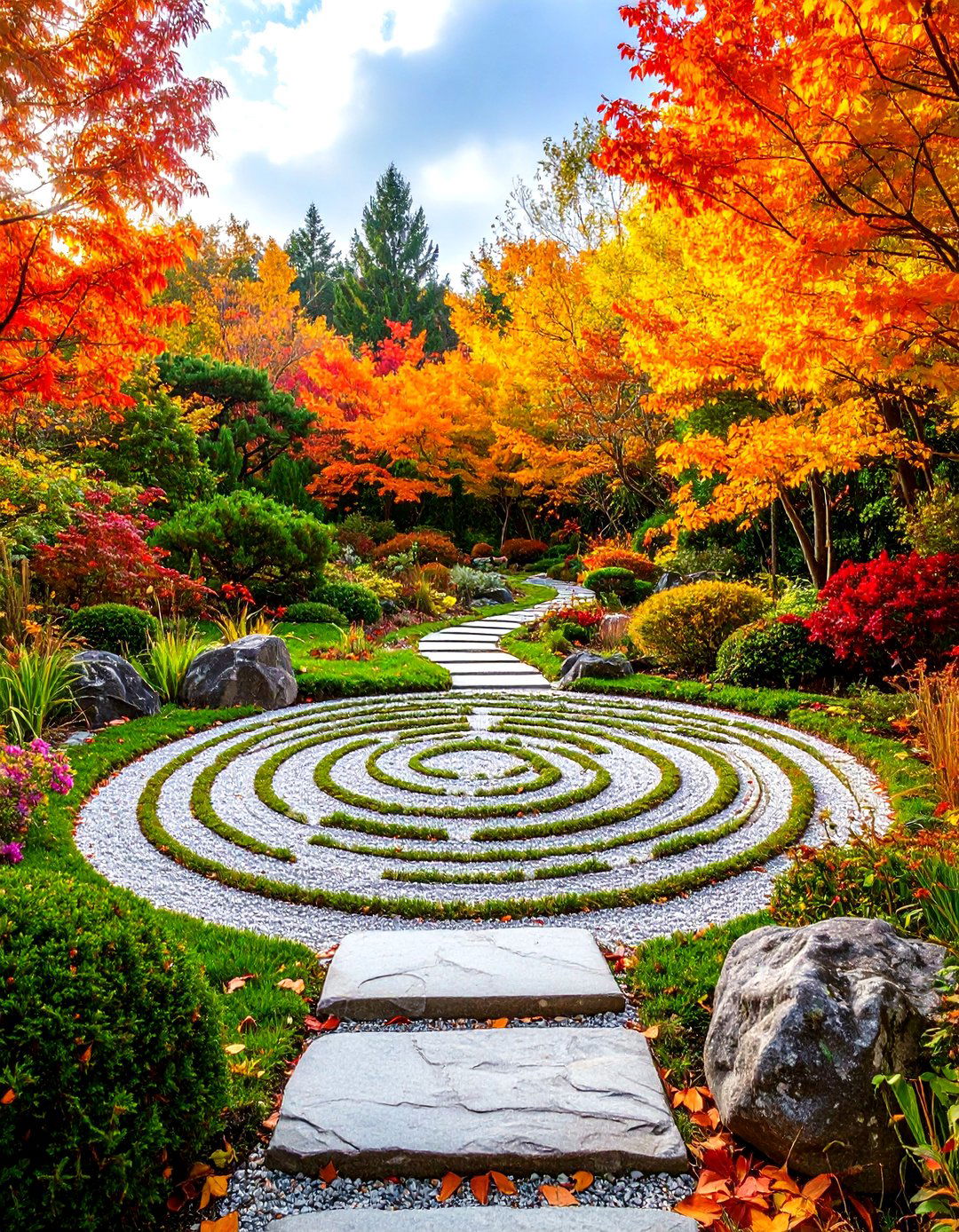
Few things are as meditative as walking through a labyrinth where the journey becomes more important than the destination. A labyrinth zen garden creates structured meditation paths that encourage introspection through purposeful movement. Unlike mazes designed to confuse, labyrinths offer single paths leading to centers and back out again, symbolizing life's spiritual journey. These can be created through plantings, stone layouts, or even simple grass patterns cut into lawn areas. Walking labyrinths promotes meditative movement while providing gentle exercise and mental clarity. The repetitive nature of labyrinth walking calms busy minds while the focused attention required provides natural mindfulness training perfect for modern stress relief.
Conclusion:
Creating your perfect zen garden sanctuary requires balancing personal preferences with traditional principles of simplicity, harmony, and mindfulness. Whether you choose a traditional dry landscape with raked sand or a modern container garden with contemporary elements, the key lies in creating spaces that encourage peaceful reflection and stress relief. Remember that zen gardens evolve over time, growing more beautiful as plants mature and your understanding of meditative practices deepens. Start with one element that resonates with your lifestyle and gradually expand your peaceful retreat into a complete sanctuary for mind, body, and spirit.




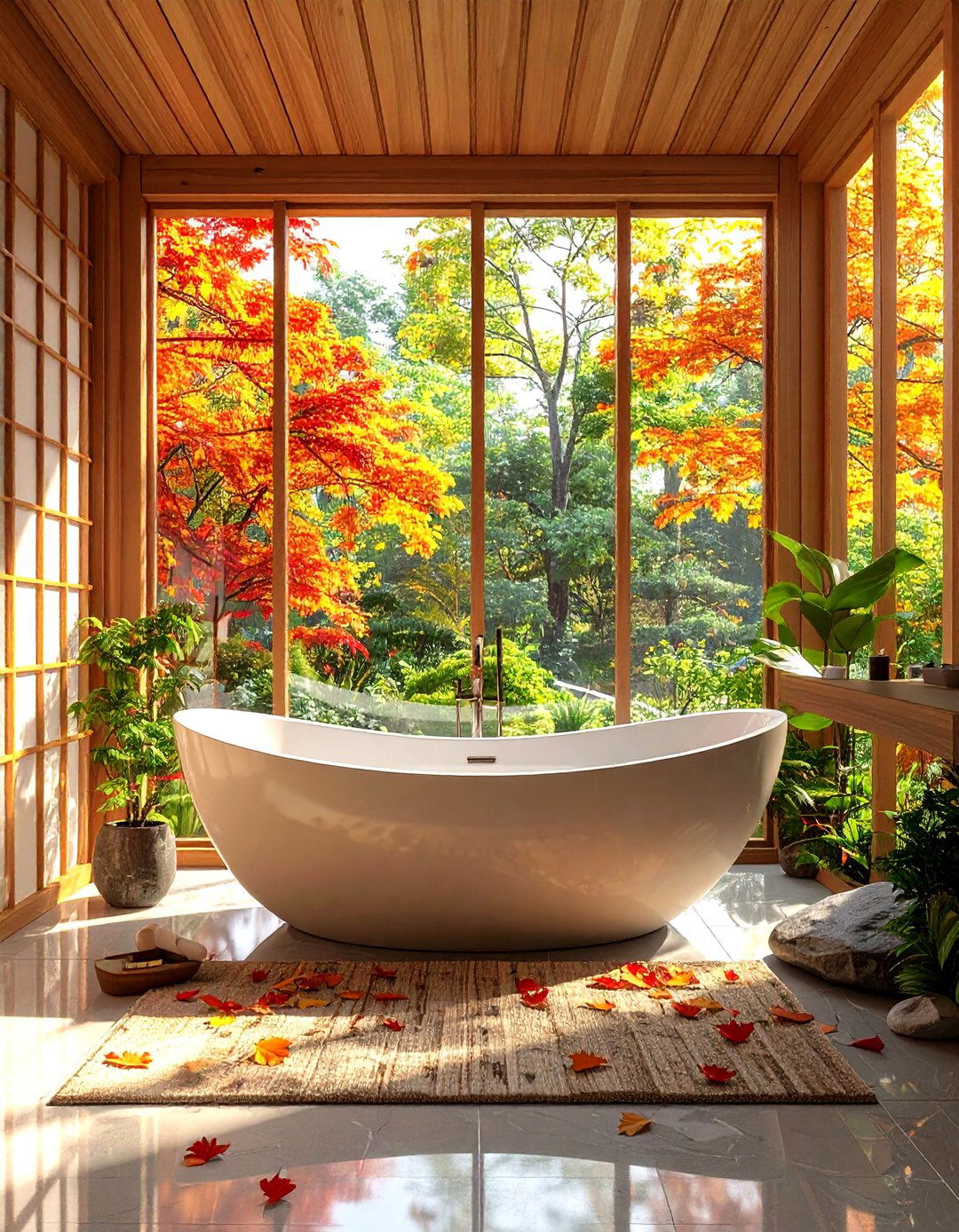
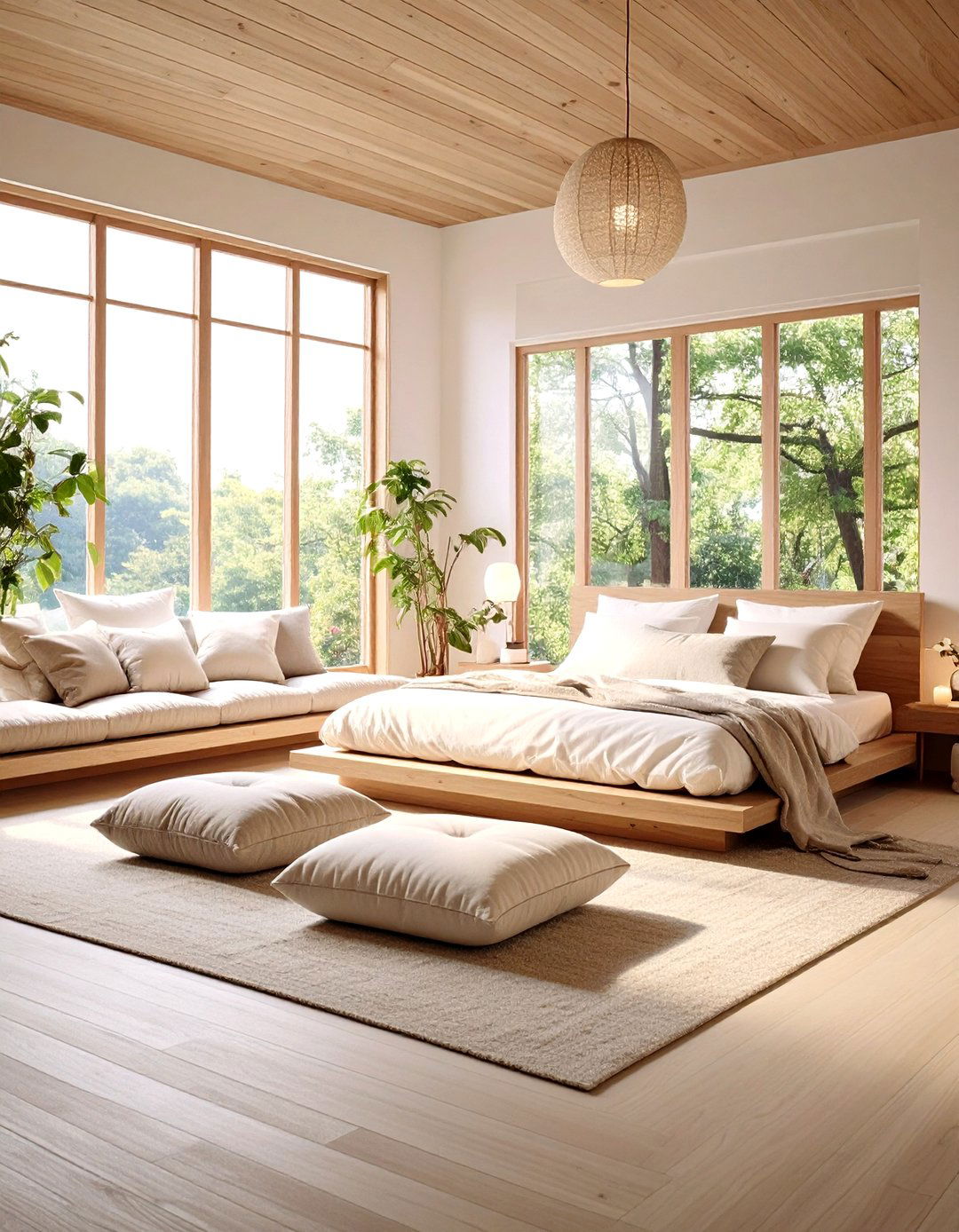

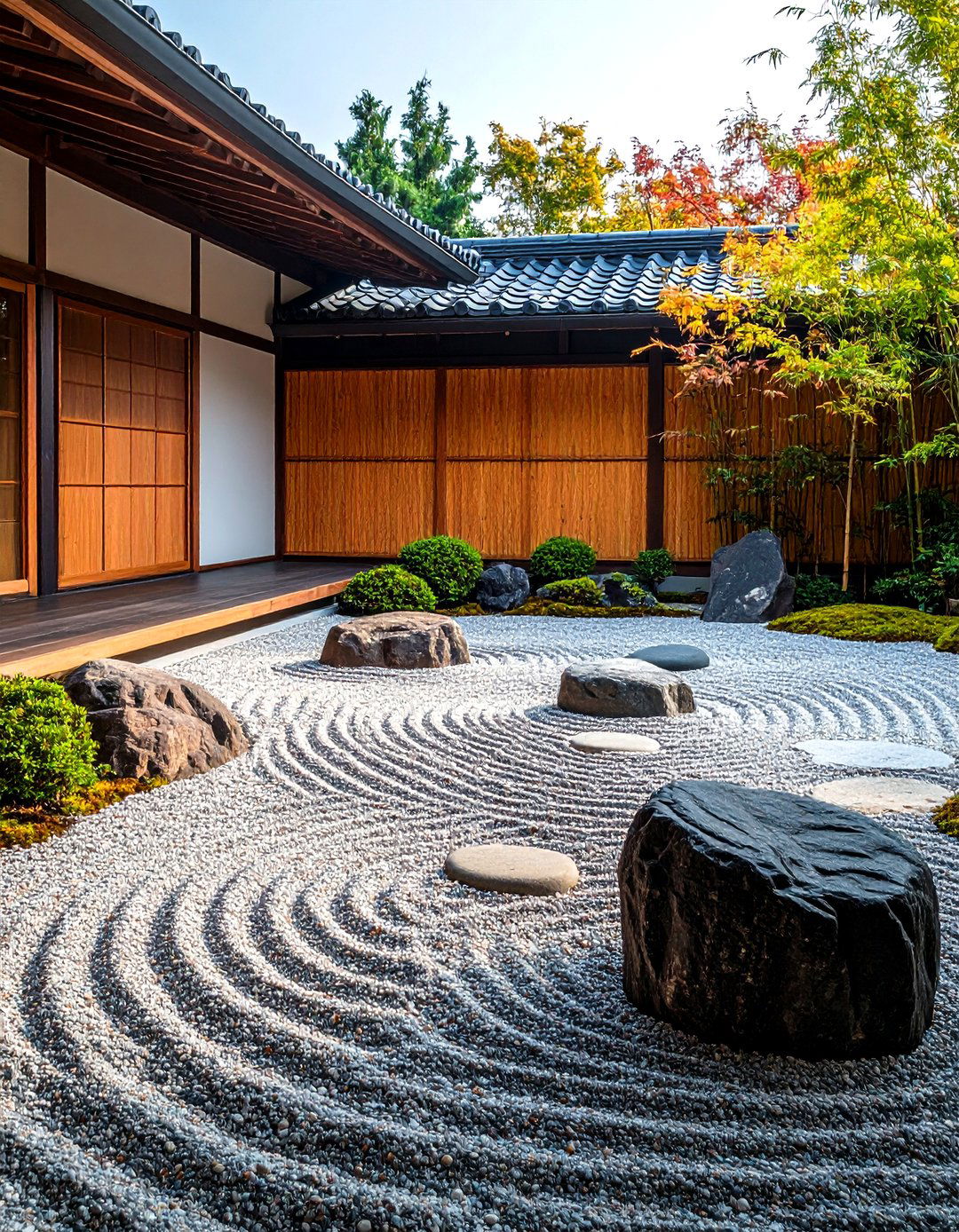

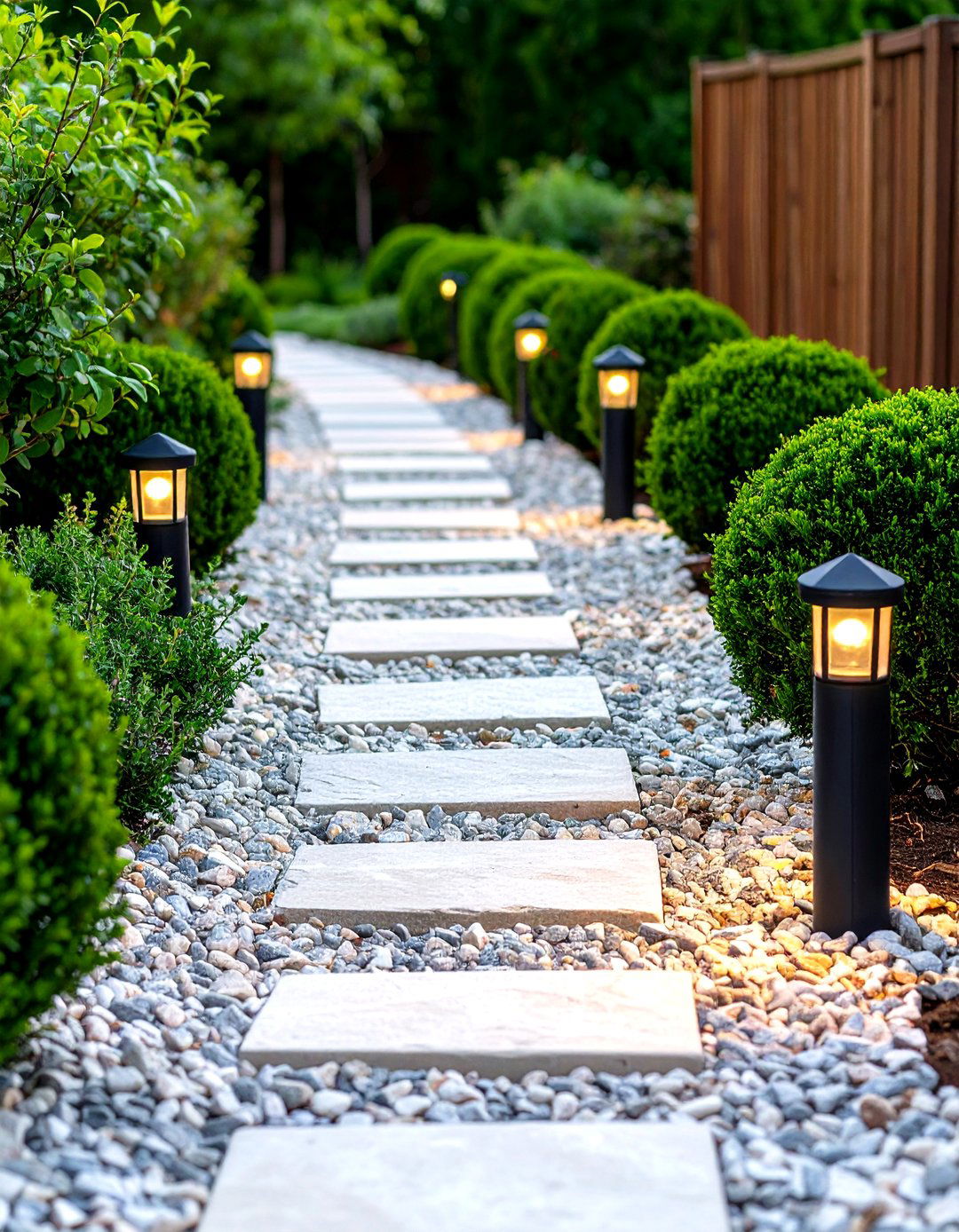
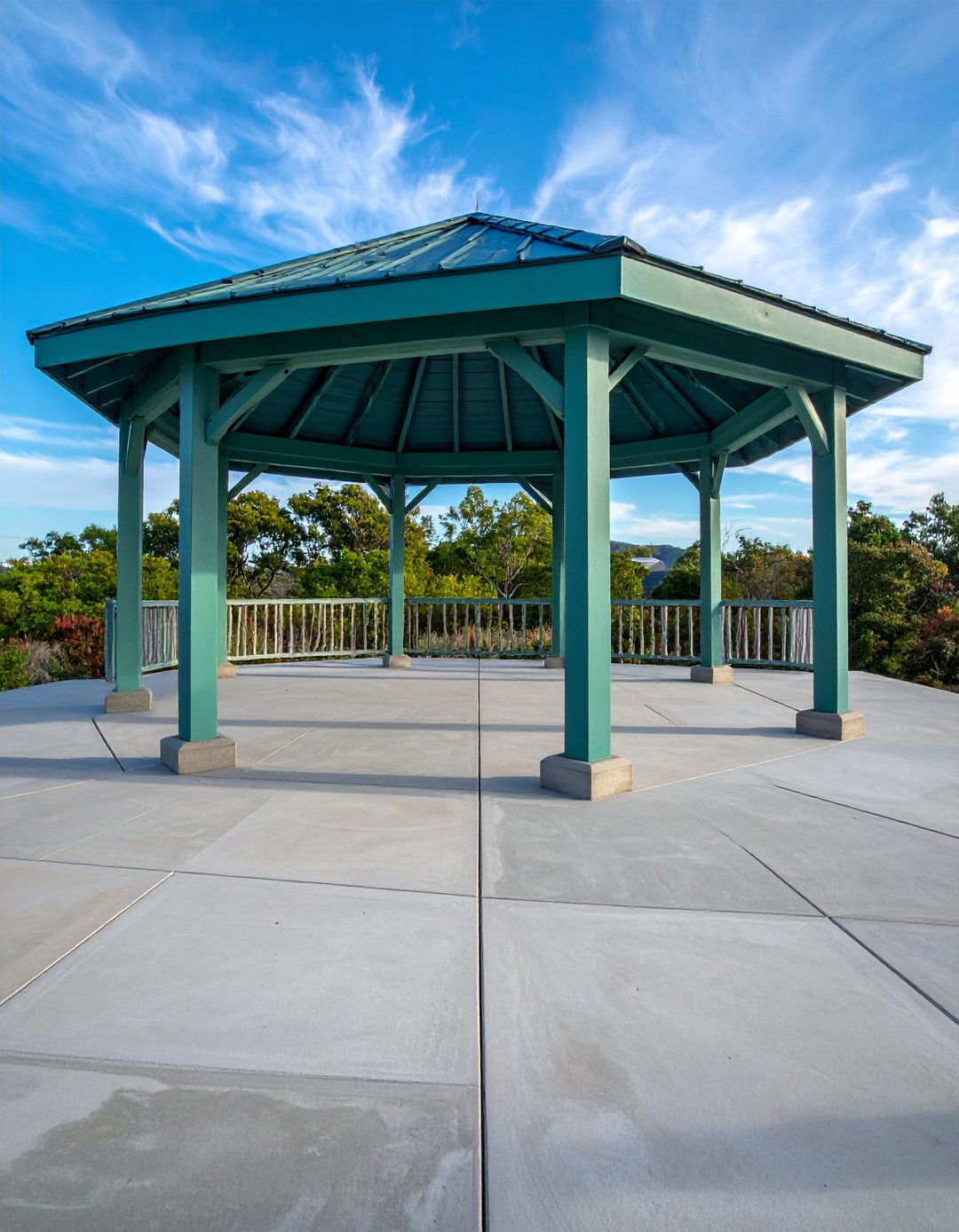
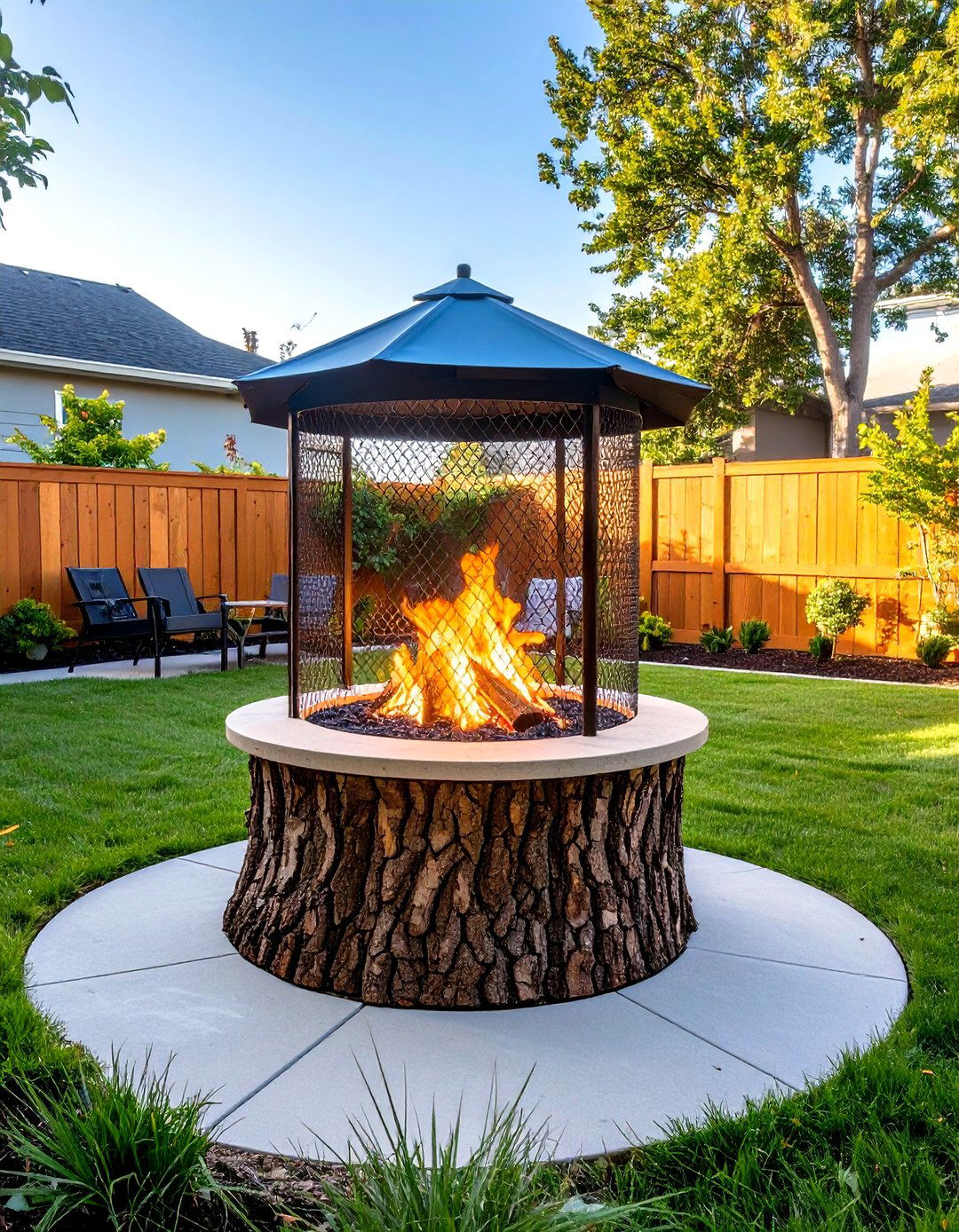

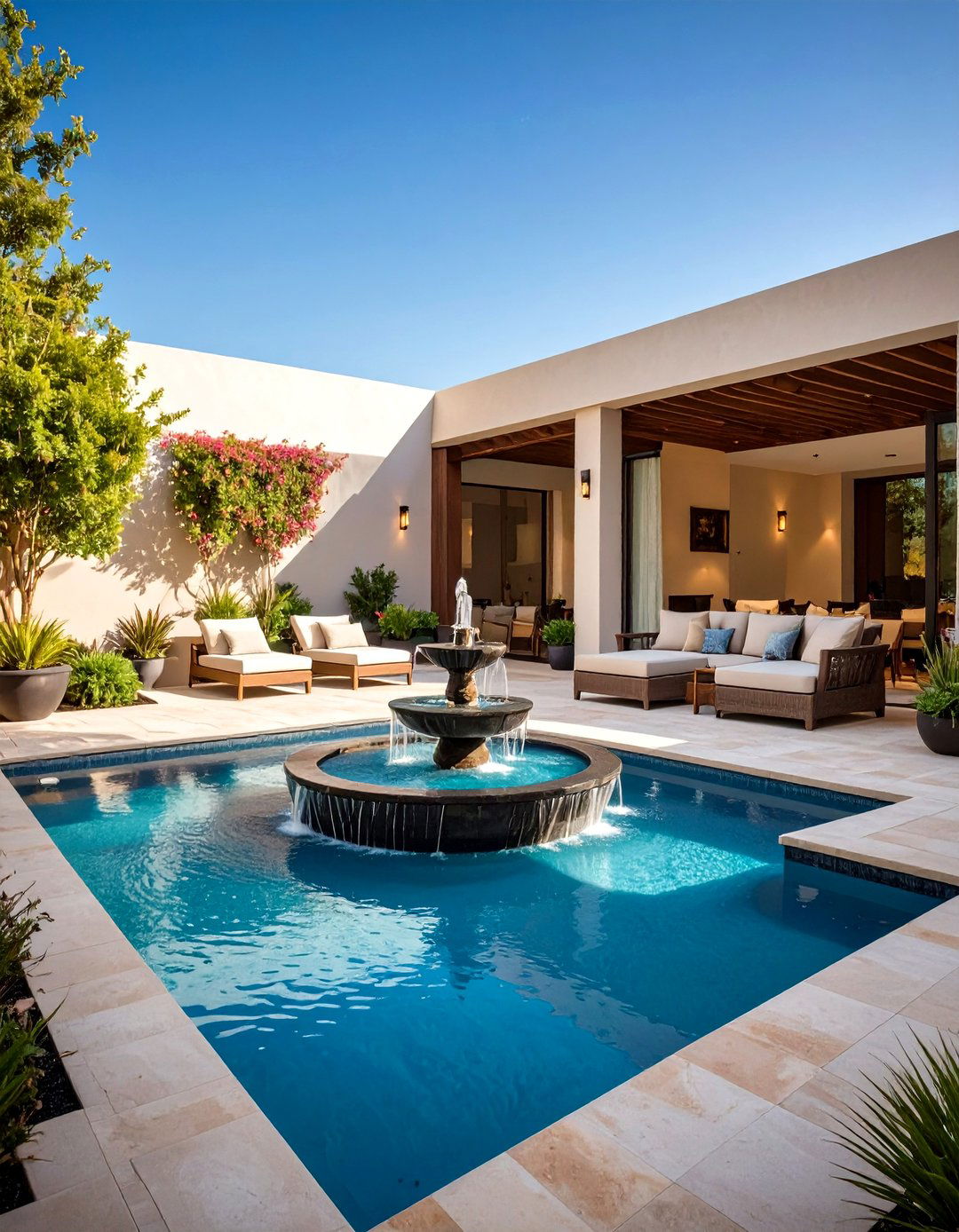
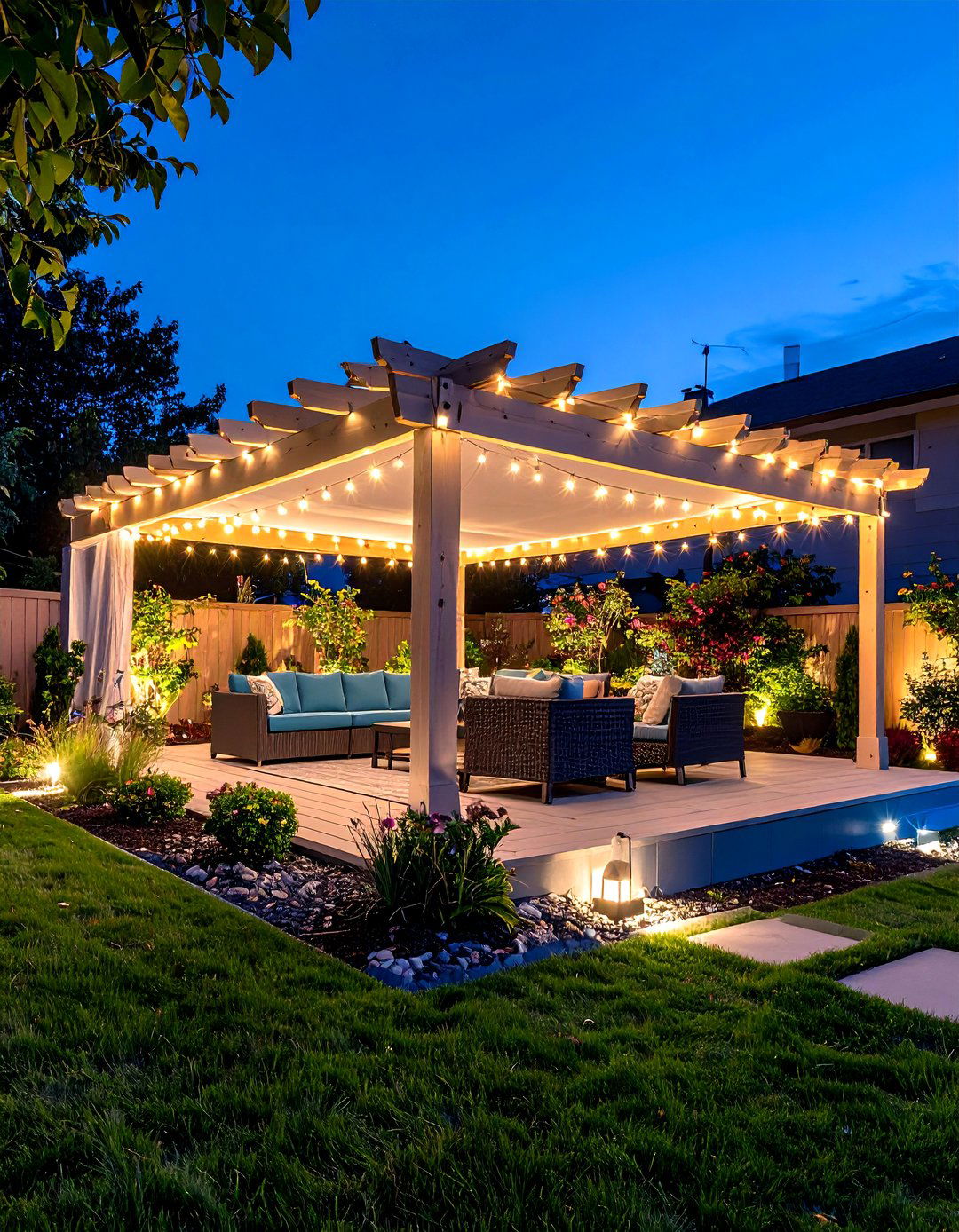
Leave a Reply